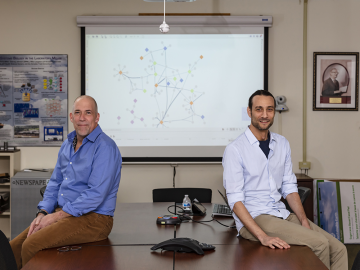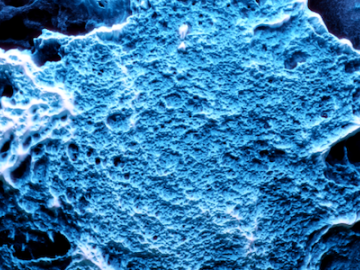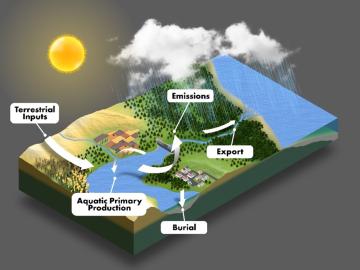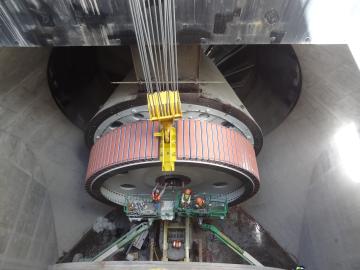
Filter News
Area of Research
- Biology and Environment (27)
- Computational Biology (1)
- Computational Engineering (1)
- Computer Science (2)
- Energy Science (18)
- Isotopes (1)
- Materials (15)
- Materials for Computing (5)
- Mathematics (1)
- National Security (1)
- Neutron Science (23)
- Nuclear Science and Technology (5)
- Quantum information Science (3)
- Supercomputing (13)
News Type
News Topics
- (-) Biology (21)
- (-) Biomedical (11)
- (-) Environment (48)
- (-) Exascale Computing (1)
- (-) Molten Salt (5)
- (-) Nanotechnology (12)
- (-) Neutron Science (27)
- (-) Quantum Science (12)
- 3-D Printing/Advanced Manufacturing (34)
- Advanced Reactors (13)
- Artificial Intelligence (16)
- Big Data (17)
- Bioenergy (17)
- Biotechnology (4)
- Buildings (21)
- Chemical Sciences (13)
- Clean Water (14)
- Composites (11)
- Computer Science (42)
- Coronavirus (11)
- Critical Materials (12)
- Cybersecurity (3)
- Emergency (1)
- Energy Storage (32)
- Fossil Energy (1)
- Frontier (1)
- Fusion (9)
- Grid (22)
- High-Performance Computing (12)
- Hydropower (6)
- Irradiation (2)
- Isotopes (5)
- ITER (3)
- Machine Learning (14)
- Materials (36)
- Materials Science (34)
- Mathematics (3)
- Mercury (3)
- Microscopy (11)
- National Security (3)
- Nuclear Energy (19)
- Partnerships (2)
- Physics (4)
- Polymers (10)
- Quantum Computing (5)
- Security (1)
- Simulation (9)
- Space Exploration (10)
- Statistics (1)
- Summit (8)
- Transportation (36)
Media Contacts

Oak Ridge National Laboratory researchers serendipitously discovered when they automated the beam of an electron microscope to precisely drill holes in the atomically thin lattice of graphene, the drilled holes closed up.

ORNL researchers discovered genetic mutations that underlie autism using a new approach that could lead to better diagnostics and drug therapies.

Neutron scattering techniques were used as part of a study of a novel nanoreactor material that grows crystalline hydrogen clathrates, or HCs, capable of storing hydrogen.
A team from Oak Ridge National Laboratory, Duke University and other institutions studying Sphagnum moss have identified two new species in North America, and they are learning how evolution may affect the species’ role in carbon storage.

Global carbon emissions from inland waters such as lakes, rivers, streams and ponds are being undercounted by about 13% and will likely continue to rise given climate events and land use changes, ORNL scientists found.

Researchers at ORNL explored radium’s chemistry to advance cancer treatments using ionizing radiation.

A multi-lab research team led by ORNL's Paul Kent is developing a computer application called QMCPACK to enable precise and reliable predictions of the fundamental properties of materials critical in energy research.

Researchers from ORNL, the University of Tennessee at Chattanooga and Tuskegee University used mathematics to predict which areas of the SARS-CoV-2 spike protein are most likely to mutate.

A team of scientists led by Oak Ridge National Laboratory developed a theory that thylakoids, membrane networks key to plant photosynthesis, also function as a defense mechanism to harsh growing conditions, which could aid the development of hardier plants.

A new Department of Energy report produced by Oak Ridge National Laboratory identifies several supply chain must-haves in maintaining the pivotal role hydropower will play in decarbonizing the nation’s grid.


